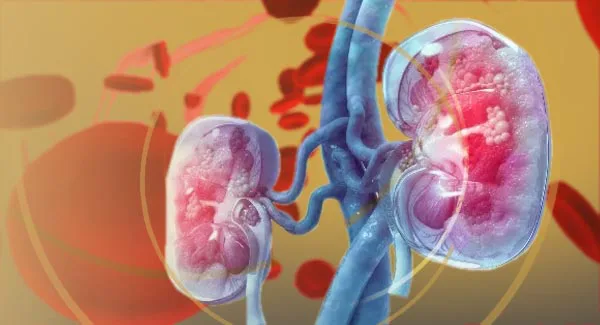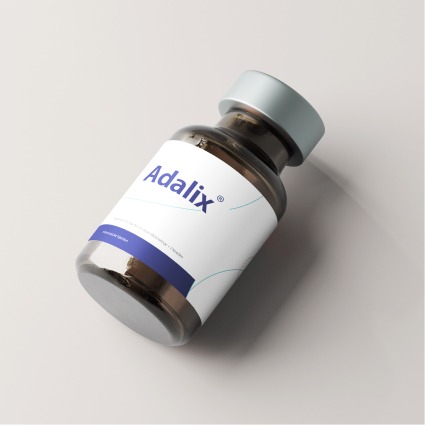Abstract
Chronic kidney disease (CKD) is a progressive disorder that significantly affects erythropoiesis, leading to anemia due to insufficient endogenous erythropoietin production. Anemia in CKD is associated with increased cardiovascular risk, higher mortality rates, and decreased quality of life. Epolix (Erythropoietin Alpha) is a recombinant human erythropoietin formulation designed to stimulate red blood cell production and alleviate anemia in CKD patients. This article explores the critical role of Epolix in managing CKD-related anemia, its mechanism of action, clinical efficacy, and its potential role in mitigating cardiovascular complications. Additionally, we integrate recent findings from machine learning (ML)-based cardiovascular event (CVE) prediction models in CKD patients, highlighting how predictive analytics can enhance erythropoietin therapy strategies.
Introduction
Chronic kidney disease (CKD) is a global health burden, affecting millions of individuals worldwide. Its complications extend beyond renal dysfunction, with one of the most severe being anemia, resulting from decreased erythropoietin production by the failing kidneys. CKD-related anemia is not only a hematologic disorder but also a major contributor to cardiovascular morbidity and mortality. Patients with CKD and diabetes mellitus (DM) are at an exceptionally high risk of cardiovascular events (CVEs), making effective anemia management a clinical priority.
Erythropoietin-stimulating agents (ESAs), such as Epolix (Erythropoietin Alpha), have revolutionized the management of CKD-induced anemia. By mimicking natural erythropoietin, Epolix restores erythropoiesis, improving oxygen delivery and reducing complications associated with anemia. However, recent advancements in predictive modeling, particularly machine learning (ML), provide new avenues to optimize ESA therapy. A study utilizing ML to predict CVEs in CKD-DM patients suggests that integrating predictive analytics into anemia management can refine treatment strategies and improve patient outcomes.
Pathophysiology of Anemia in CKD and Cardiovascular Risks
Anemia in CKD is primarily caused by insufficient production of erythropoietin, a glycoprotein hormone secreted by renal peritubular cells. The failure of this regulatory mechanism results in decreased red blood cell (RBC) production, leading to fatigue, reduced exercise tolerance, and increased cardiovascular strain. Several mechanisms contribute to heightened cardiovascular risks in CKD-related anemia, including:
- Increased Cardiac Workload: Reduced oxygen-carrying capacity leads to compensatory cardiac hypertrophy, predisposing patients to heart failure.
- Endothelial Dysfunction: Chronic anemia exacerbates oxidative stress and endothelial dysfunction, increasing the risk of atherosclerosis.
- Inflammatory Activation: CKD-induced anemia is associated with elevated pro-inflammatory cytokines that further impair erythropoiesis and promote vascular damage.
- Hypercoagulability: Anemia contributes to a hypercoagulable state, increasing the likelihood of thrombotic events such as stroke and myocardial infarction.
The integration of predictive ML models, as referenced in the recent study, has identified that a decrease in estimated glomerular filtration rate (eGFR), aging, and elevated inflammatory markers significantly enhance CVE risk. These findings underscore the critical need for early and effective intervention with ESAs such as Epolix.
The Role of Epolix in CKD-Associated Anemia
Epolix (Erythropoietin Alpha) is a recombinant human erythropoietin that binds to erythroid progenitor cells in the bone marrow, stimulating their differentiation into mature RBCs. This process enhances oxygen transport and alleviates the symptoms of anemia. The key attributes of Epolix therapy include:
– Increased Hemoglobin Levels: Rapid correction of anemia, reducing fatigue, and improving patient quality of life.
– Cardiovascular Risk Reduction: Restored oxygenation not only reduces cardiac strain but also holds promise in decreasing left ventricular hypertrophy risk, offering a hopeful outlook for CKD management.
– Improved Exercise Tolerance: Enhanced oxygen transport facilitates better physical endurance and daily function.
– Delayed CKD Progression: Anemia correction improves overall renal function by reducing ischemic stress on kidney tissues.
Clinical studies have demonstrated that erythropoietin therapy significantly decreases hospitalization rates, mortality, and cardiovascular complications in CKD patients. However, the challenge remains in tailoring erythropoietin dosing to optimize outcomes while minimizing adverse effects such as hypertension and thromboembolic events.
Machine Learning and Predictive Analytics in Erythropoietin Therapy
The study utilizing ML models to predict CVEs in CKD patients underscores the potential of data-driven strategies in optimizing ESA therapy. Among the ML models tested—Logistic Regression, Random Forest, Support Vector Classification, Light Gradient Boosting Machine (LGBM), and eXtreme Gradient Boosting Machine (XGBM)—LGBM demonstrated superior predictive accuracy (AUC = 0.740, 95% CI 0.738-0.743), particularly for identifying high-risk individuals. This predictive capability can be harnessed to tailor Epolix therapy, thereby improving patient outcomes.
This predictive capability can be harnessed to tailor Epolix therapy by:
– Risk Stratification: Identifying patients at heightened CVE risk to prioritize aggressive anemia management.
– Personalized Dosing: Using ML to optimize Epolix dosing based on individual patient characteristics and biomarkers.
– Monitoring and Adjustments: Incorporating real-time patient data into ML models to adjust erythropoietin therapy dynamically.
Challenges and Future Directions
Despite the clinical benefits of Epolix, several challenges remain:
– Erythropoietin Resistance: Some CKD patients exhibit suboptimal responses due to inflammation, iron deficiency, or secondary hyperparathyroidism.
– Overcorrection Risks: Excessive hemoglobin increases the risk of hypertension and thrombotic complications, necessitating precise dosing strategies.
– Integration of ML Models: While predictive analytics hold promise, external validation is required before ML-based risk stratification becomes standard in clinical practice.
Future advancements in biomarker discovery, real-world data analytics, and AI-driven clinical decision support systems will enhance the precision of erythropoietin therapy, sparking excitement about the future of CKD management.
Conclusion
Epolix (Erythropoietin Alpha) represents a cornerstone in managing CKD-related anemia, improving hemoglobin levels, reducing cardiovascular risks, and enhancing patient quality of life. Recent research demonstrated that applying ML-based risk prediction provides a novel approach to optimizing ESA therapy. By leveraging predictive analytics, clinicians can better stratify risk, personalize treatment, and improve outcomes for CKD patients. As technology advances, integrating AI and erythropoietin therapy may revolutionize the standard of care for anemia management, ensuring safer, more effective, and more precise interventions.
Learn more about advancements in biosimilar medications by visiting Opal Bio Pharma.

